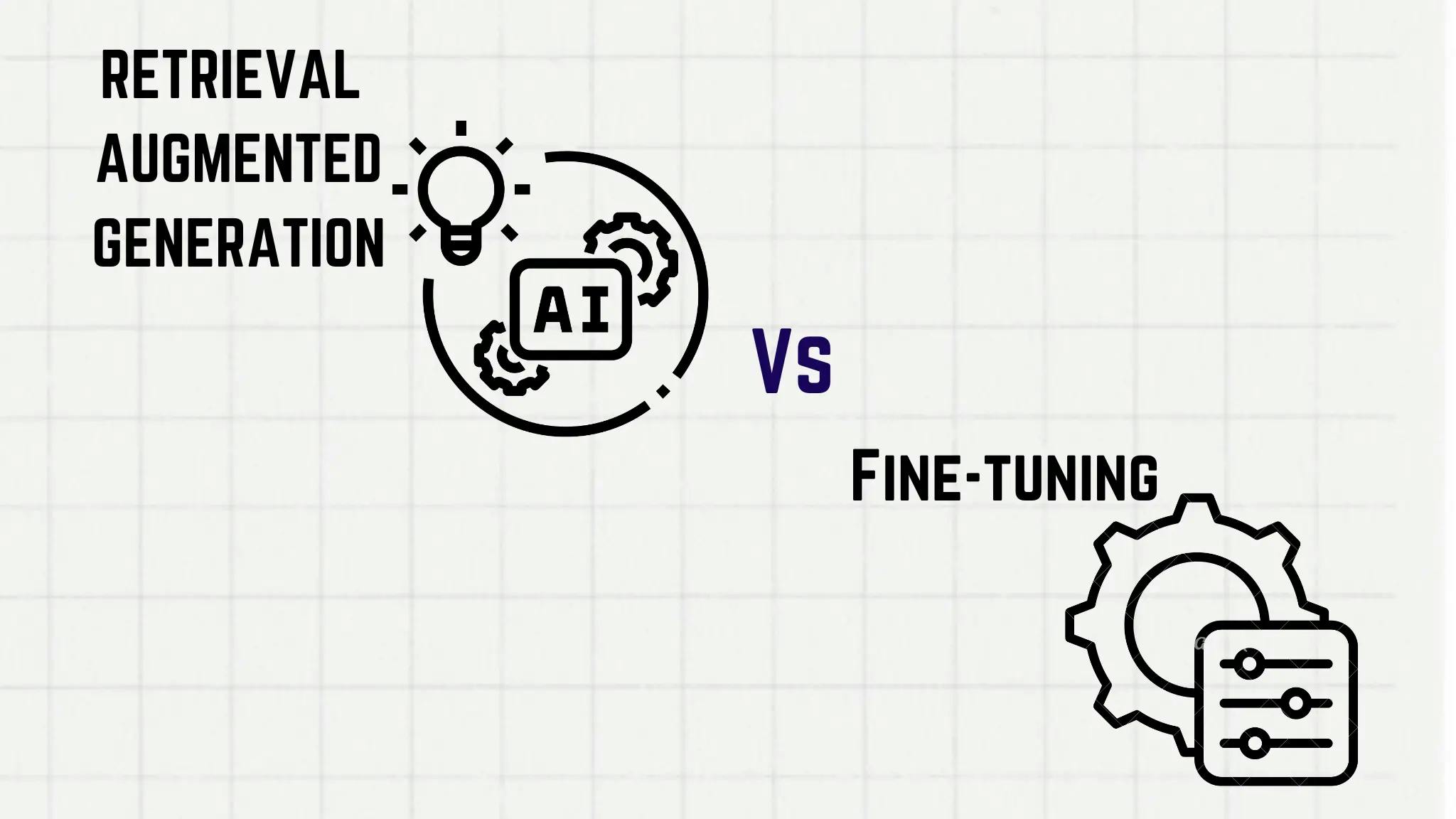So, you’ve got a bunch of data.
Maybe it’s a huge pile of customer support logs, technical documentation, legal contracts, or medical research. You’re considering plugging this into a large language model (LLM) to get smarter responses and help analyze the data.
But now you’re stuck on a key question: should you fine-tune the model, or should you use Retrieval-Augmented Generation (RAG)?
Let’s break it down, simply and clearly, so you can pick the right tool for your job.
What Fine-Tuning Actually Means
Fine-tuning is like sending an LLM back to school , but just for your specific subject.
Instead of teaching it everything about your particular domain from scratch, you’re updating a pre-trained model and giving it further training based on your own examples.
If the model was trained on general internet text, you can fine-tune it using, say, internal sales calls or company policy documents.
Once it’s been fine-tuned, the model “remembers” this information directly. You don’t need to feed it context at every prompt . It just knows.
Here’s the catch: fine-tuning changes the model itself. That means it takes time, compute resources, and careful testing.
And once it’s trained, it’s locked into that knowledge until you retrain it again.
How RAG Works
Retrieval-Augmented Generation works a bit like a cheat sheet.
The model doesn’t need to memorize everything. Instead, when you ask it a question, it quickly searches through a database or document store for the most relevant information. Then, it uses that information to craft a response.
Imagine asking a model: “What are our company’s return policies?” With RAG, it doesn’t guess. It grabs the actual return policy from your knowledge base and answers based on that.
It’s fast, flexible, and easier to update – just change the underlying documents, and the system is instantly smarter.
When Fine-Tuning Makes Sense
Fine-tuning is a good choice when your use case checks at least a few of these boxes:
- Consistent phrasing or tone is important – Think customer service bots that need to sound “on brand” every time.
- You’re automating a repetitive task – Like tagging documents, summarizing meeting notes, or classifying tickets. The model can learn the pattern and apply it quickly.
- Your data is specialized or technical – If you work in a niche field like aerospace engineering or tax law , you might want the model to master your domain.
- You don’t want to keep retrieving context – For high-performance tasks where latency matters, fine-tuning avoids the extra step of searching through a database.
Here’s an example: A healthcare startup wants their chatbot to provide medical advice based on internal clinical guidelines. They fine-tune the model with their curated, vetted material to make sure responses are both accurate and consistent. The model doesn’t need to keep looking up the same instructions – it just knows them.
When RAG Is the Better Fit
RAG shines when you need fresh, accurate, and document-grounded responses, especially if the data might change often.
You’ll likely want RAG if:
- Your data updates frequently – No one wants to re-train a model every time a policy changes or a product gets renamed.
- You’re working with large sets of documents – Thousands of pages of PDFs, markdown notes, meeting, transcripts, etc.
- Accuracy is tied to source material – If your responses need citations or traceability (like in legal, financial, or academic contexts), RAG lets you point back to the original text.
- You need flexibility for different topics – A support bot that answers across dozens of products can use RAG to retrieve product-specific answers without needing one model per product.
Say you run an enterprise help desk. Employees ask questions about internal tools, benefits, and workflows. These documents live in Confluence, SharePoint, and Google Docs.
You don’t want to re-train a model every time HR updates the PTO policy. With RAG, you just update the document store, and the model instantly reflects the change.
The Trade-Offs You Should Know
RAG is easier to manage, but it introduces a new challenge: retrieval quality. If the search system doesn’t find the right documents, the model’s answers will be off.
Fine-tuning avoids this problem, but at the cost of flexibility and speed to update. Fine-tuning can also be more expensive up front, especially if you’re training on lots of examples. You’ll need infrastructure, time, and testing.
RAG, on the other hand, can often be set up faster and scaled incrementally.
And here’s one more: fine-tuned models are “closed books.” They don’t cite sources, and it’s harder to tell where a specific answer came from. RAG-based systems are more transparent, since they include the original text in the response context.
Can You Use Both?
Some teams use fine-tuning and RAG together.
You might fine-tune the model to follow your tone of voice and use RAG to supply it with accurate facts.
Or maybe you fine-tune it on repetitive support tickets, but use RAG to handle less common, longer-form questions.
The point is that this isn’t an either/or decision forever. It’s about picking what fits your current needs best, and staying flexible for the future.
How to Choose between Fine-Tuning vs RAG
Start with your use case. Ask yourself:
- How often will this data change?
- Does the model need to explain or cite sources?
- Is speed or accuracy more important?
- How much control do I need over the model’s tone and behavior?
- Do I have the resources (time, data, compute) to fine-tune?
If you want fast, factual, and up-to-date answers, go with RAG.
If you need the model to deeply internalise patterns or speak with a consistent voice, go with fine-tuning.
If you want both? You’re not alone. Many advanced systems are doing just that.
Summary
There’s no single “right” answer – but there will be a right fit for your project. Fine-tuning gives you precision and control. RAG gives you flexibility and transparency. Think about your data, your users, and how often things change.
Hope you liked this article. You can connect with me on Linkedin to stay in touch.










